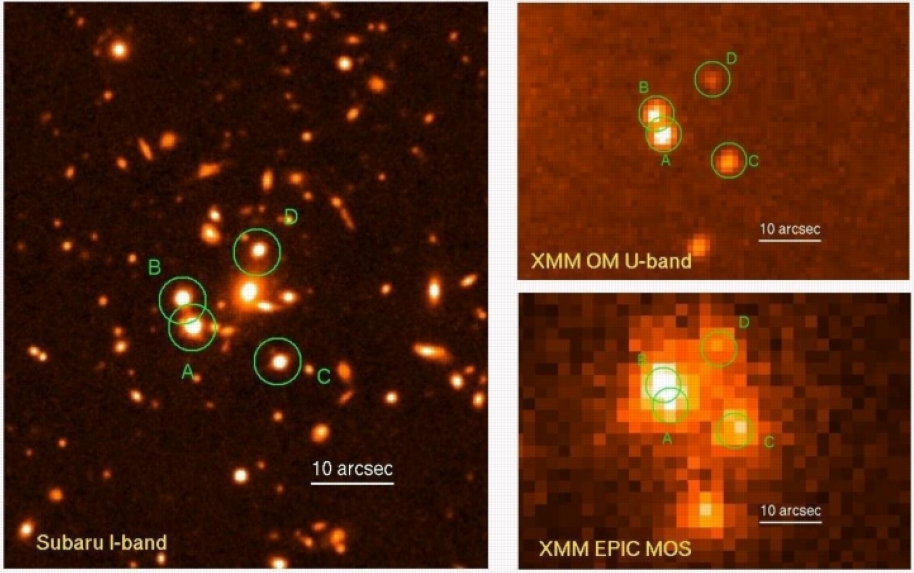
 Credit: G. Lamer and ESA; Subaru image obtained from the SMOKA science archive, operated by NAOJ
Credit: G. Lamer and ESA; Subaru image obtained from the SMOKA science archive, operated by NAOJ
House of Mirrors
Light goes bouncing around the Universe, guided by gravity. Sometimes light beams head off in two different directions, but because of the bending of spacetime by matter, wind up in the same place. Astronomers call this a gravitational lens. Such a gravitational lens is shown in the image above. The image on the left, obtained by the Subaru telescope, shows apparently 4 unique sources (circled, marked A through D) which are actually images of the same distant active galaxy split into 4 by the gravity of a foreground cluster of galaxies. The images on the right are images of the same system obtained by the XMM-Newton satellite. The image above right was obtained by the optical monitor on XMM-Newton, while the lower right image shows the X-ray emission from the same 4 sources as seen by the EPIC X-ray camera. Interestingly, the brightest optical lens source (source A) is pretty faint in the X-ray image. Astronomers are searching for an explanation.
<
HEA Dictionary ● Archive
● Search HEAPOW
● Other Languages
● HEAPOW on Facebook
● Download all Images
● Education ● HEAD
>
Each week the HEASARC
brings you new, exciting and beautiful images from X-ray and Gamma ray
astronomy. Check back each week and be sure to check out the HEAPOW archive!
Page Author: Dr. Michael F. Corcoran
Last modified Monday, 26-Feb-2024 17:35:30 EST


